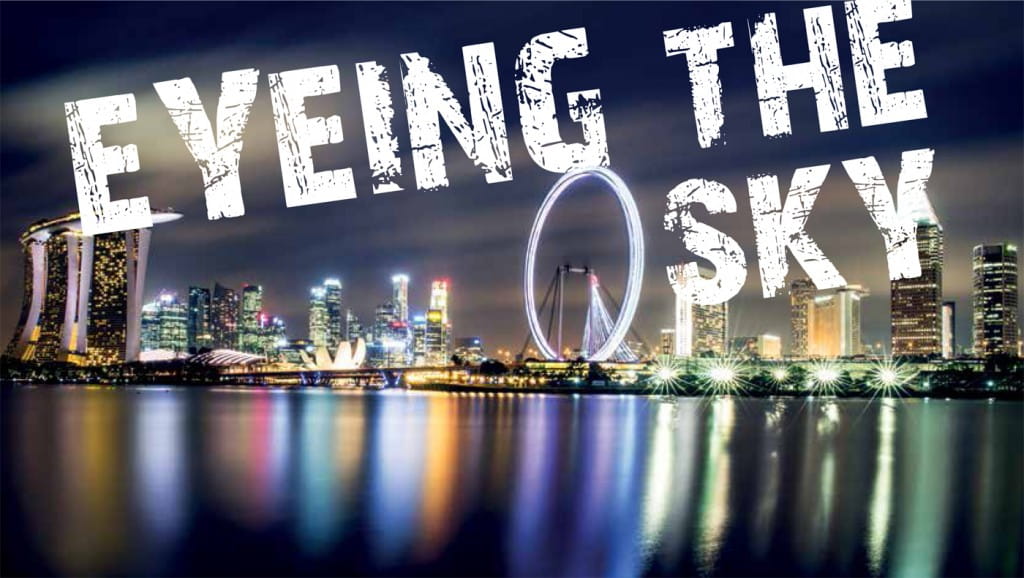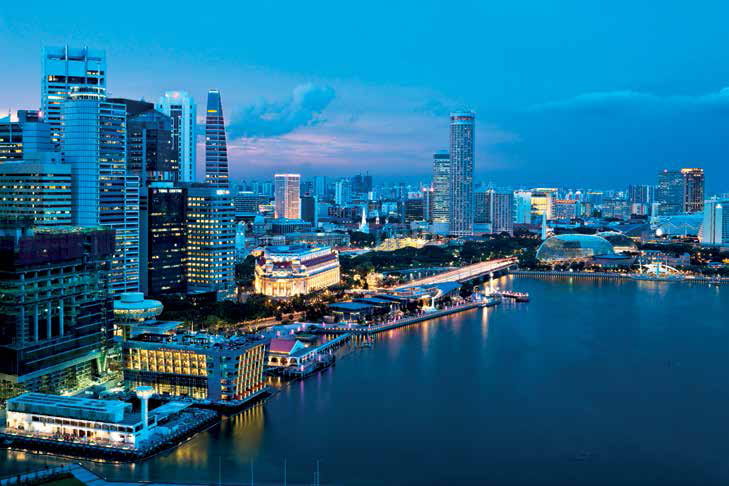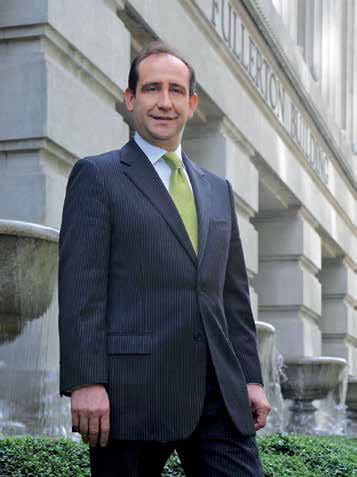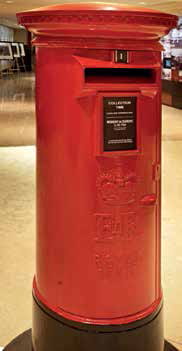
The Singapore skyline continues to be transformed dramatically over the decades with new skyscrapers set to come up.
New high-rises have popped up on Singapore’s skyline which has taken on a new character since the turn of the millennium.
By Valerie Wee
ust like the popular saying of “something old, something new; something borrowed, something blue”, our skyline is a remarkable visual tribute — to the union of our diverse heritage and culture, an exquisite synergy of the old and new, as well as the anticipation of tomorrow.
It is not uncommon to hear a returning visitor to Singapore remark on the architectural progression that the island has undergone. As swiftly as things change in the country, its skyline too has been undergoing dramatic transformations in recent years. And these are not superficial changes — Singapore has ushered in the new millennium with a skyscraper boom. The pace has not relented since, with a sharp increase of skyline activity in the Marina Bay district.
To work around the issue of its limited space and a growing population, Singapore now boasts over 4,000 tall buildings, of which 60 are above 140 metres in height. Emporis — a leading database for information on high-rise buildings worldwide — has ranked Singapore third after Hong Kong and New York City. The ranking is based on a system of points assigned to the number of storeys and determined by the visual impact of the city’s skyline. With 168 high-rises over 100 metres in height, Singapore also rises easily to eighth on Emporis’ list for the highest number of skyscrapers in the world.
Roll in an observation wheel — the Singapore Flyer (it was the tallest in the world until it was ousted this year by another wheel in Las Vegas, which was 2.6m taller) — plus an architecturally bold and spiky icon of the arts, the Esplanade, and the tropical sun rises and sets on a magazine-worthy cover shot of Singapore’s urban profile. It is a sublime sprawl of modern steel sky grazers juxtaposed against stumpy shophouses, colonial government houses, and flanked by an arc of bustling waterfront activity. As the General Manager of The Fullerton Heritage Precinct, Giovanni Viterale, describes it: “Singapore’s city skyline today is a dynamic mix of old and new; tall and low buildings, and I love how it reflects the city’s character.”
Reaching new heights
The architectural profile that defines downtown Singapore is a mixed bag of commercial, hospitality, residential and city living. Here, 59 skyscrapers huddle close together with the “tallest” accolade shared between three developments: United Overseas Bank Plaza One, Republic Plaza, and the Overseas Union Bank Centre. From Clarke Quay, Chinatown, Raffles Place, Shenton Way to Marina Bay, other notable buildings that contribute to a unique Singapore skyline also include the Esplanade — designed by London agency Michael Wilford and DP Architects — a world-class destination for the performing arts which, due to its spiky exterior has also been likened to the durian. The imposing torpedo-like shape of the I.M. Pei-designed Swissotel stands proudly as one of the tallest hotels in South East Asia.
Nearby, a striking profile envisioned by renowned architect Moshe Safdie rises up a dizzying 57 floors offering its 500sq ft infinity pool to the gods. The Marina Bay Sands plays an expansive role as a host for a casino, clubs, accommodation, fine dining and even a park in the sky. Below lies the lotus-shaped ArtScience Museum while the futuristic prism of Louis Vuitton’s flagship store bobs in the bay. Behind, the sci-fi-like trees of tomorrow mark the majestic glass pods — the greenhouse of Gardens by the Bay.
Holding on to the past
On the other end of the prolific Singapore skyline, the Parliament House exudes a contemporary expression of authority with its prism-shaped roof — designed by former President Ong Teng Cheong — to replace the traditional dome of most colonial buildings. One significant building that keeps its signature turquoise dome is the Old Supreme Court, built in 1939. It is the last of three landmarks in Singapore to sport Palladian architecture that features classical design, Corinthian columns and Italian murals. Designed by civil servant Frank Dorrington Ward, it is a national monument which has been slated to be refurbished into an arts and cultural hub. Adjacent to it, facing the Padang green is the stately City Hall blueprinted by A. Gordans and F.D. Meadows, architects who were also working for the municipal government. It is due to be converted into the National Art Gallery by 2015. Probably the only spire that pierces the Singapore sky at 63 metres belongs to the second St Andrew’s Cathedral, built in 1856 to replace the original Palladian-styled building by George Coleman after it was struck by lightning twice.
Today’s take on yesterday
Another significant colonial landmark that takes centrestage in the Singapore skyline is the Fullerton Hotel. After a twoyear, $400 million rejuvenation, this six-star, 400-room establishment received the Architectural Heritage Award, the highest honour from the Urban Redevelopment Authority of Singapore, in 2001. Constructed in 1928 for $4 million, it was easily the largest and most modern building then. Seated squarely at the mouth of the Singapore River, the building once housed the General Post Office and represents the height of Palladium architecture with its signature Doric columns, coffered ceilings and cornices, Italian marbled floors facade and monumental porch. Principal architect, Tay Lee Soon, of Architects 61, steered the revamp of the Fullerton Building as well as One Fullerton, a two-storey waterfront complex comprising dining and entertainment establishments. Tay won the 2014 President’s Design Award for his work on these two projects and in an interview published in the web portal of Design Singapore, he explains his methodology: “The approach adopted for both The Fullerton Hotel and One Fullerton was to design with the times, for the times.” So, while historical detail like cornice or shanghai plaster was faithfully restored to its original splendour, Tay opted to revamp the conservatory and the porch into more contemporary styles.

The Singapore River precinct in the early 1900s.
PHOTO: © Singapore Press Holdings Limited. Reproduced with permission
The Fullerton Hotel was lauded for its integration of old and new in its architecture and interior aspects. Tay explains this: “The Fullerton Hotel and One Fullerton are contrasting buildings. The hotel is a restoration and an adaptive re-use of the General Post Office in the neo-classical style to its presentday form as an internationally recognised heritage hotel. One Fullerton, on the other hand, is designed to be more playful, open and easily identifiable. Its wave-like roof form contrasts with the more rigid structure of the hotel.”
When it comes to integrating past with present, Tay recalls the challenges. “One peculiar fact is that the historical building was designed from the outside, hence the internal floor levels bear no relationship to the window heights. There were floors where the windowsills were 1.8m above the floor. We had to ‘raise’ the floors with lightweight concrete slabs to rationalise the levels as best we could. Even so, for some rooms, there are windows at the feet, which do offer interesting street views. Similarly, there are fifth-floor balconies that offer only sky views! This adds to the charm and uniqueness of the hotel.”

The dramatic transformation of the Singapore skyline has taken place in a few decades.
The Fullerton area has seen a flurry of redevelopment in recent years with the establishment of The Fullerton Heritage. The master plan will conserve yet transform The Fullerton Heritage Precinct, which comprises The Fullerton Hotel, The Fullerton Waterboat House, One Fullerton, The Fullerton Bay Hotel, The Fullerton Pavilion, Clifford Pier and Customs House into a buzzing waterfront of dining and hospitality choices.
Looking ahead and beyond
Yet more buildings will rise up to add diversity to our landscape — Guoco Tower will soon become the tallest building at 290m in the year 2016, while the twin towers of Duo will also overtake The Pinnacle @Duxton in offering homes in the sky after The Sail @Marina Bay. Located in the Beach Road area, it will also jostle with the Concourse and The Gateway to add a new aspect to the skyline. Marina One will be a mixed-use development that will boast two residential towers and two 30-storey prime offices. Its break out space called The Heart will be landscaped by Gustafson Porter and ICN Design, the same green architects behind the neighbouring Gardens by the Bay. A whole new district will be developed in the freshly formed 35 ha Marina Bay extension — the Marina South New Town. This will house a mixture of commercial and residential facilities with 9,000 private homes as well as a great Southern Waterfront once the ports have moved out from Pasir Panjang and Tanjong Pagar to Tuas by 2027.

Hospitality industry veteran Giovanni Viterale has been the General Manager of The Fullerton Heritage since early 2010. He plays a pivotal role in overseeing the strategic direction and development of this precinct, which included launching The Fullerton Bay Hotel Singapore and Customs House in 2010 and The Fullerton Pavilion — a magnificent dome-shape floating pod on the waters of Marina Bay — in 2012. He talks to SINGAPORE magazine about the project.
How did this project take off?
The Fullerton Heritage precinct is an extraordinary project. Spread over 1.4 million sq ft with stunning views of the city skyline, the precinct consists of seven important heritage and newly built properties including The Fullerton Hotel Singapore, The Fullerton Bay Hotel Singapore, The Fullerton Waterboat House, One Fullerton, The Fullerton Pavilion, Clifford Pier and Customs House.
It is especially meaningful as so many Singaporeans have fond memories of the heritage properties, that have witnessed much of Singapore’s progress.
The challenge is to unveil a new chapter for this precinct that is as significant as the past. As the Marina Bay is a master planned project hatched by the URA (Urban Redevelopment Authority), we work closely with the government agency.
The Marina Bay Business Association, under the auspices of URA and the Singapore Tourism Board, also provides a valuable platform for us to meet and collaborate with other stakeholders of the Marina Bay area.

Giovanni Viterale has been overseeing the development of the Fullerton Heritage precinct.
How will the heritage of this area be kept alive?
Amidst Singapore’s rapid progress and transformation, The Fullerton Heritage upholds the history and legacy of the precinct. We wish to bring refreshing and relevant lifestyle choices to Singaporeans and travellers while retaining and educating customers on the historical value of this significant locale. Some of our initiatives include creating The Fullerton Heritage Gallery in 2010, establishing our Art in the City programme where we bring art by local and international artists to public spaces along the waterfront, and developing two complimentary heritage tours.
Why was the Heritage Gallery set up?
We launched it to bring history to life. We specially brought in a red pillar post box, which was first used in Singapore in 1873. Guests can post their letters and mail will be collected by our own uniformed postmaster every day. Mail sent will feature a special chop of the red pillar post box, which we have customdesigned. Other displays in the gallery include photographs, maps, stamps and philatelic materials, some of which date back to 1932.

In 2012, we appointed a historian to better share the hotel’s historical anecdotes with our guests through two guided tours, five times a week. One of the stops on the tour is The Lighthouse Restaurant & Rooftop Bar, which used to house a beacon that guided ships ashore from 1958 to 1979. We believe such activities make the experiences more poignant for our guests.
In 2013, we held an 80th anniversary exhibition at Clifford Pier where we chronicled the different roles the pier played in the socio-political landscape of Singapore from 1933 to 2006, through the memories of people.
As we showcase the best of Singapore’s past and present with The Fullerton Heritage, our greatest goal is to attract people from all walks of life, locals and travellers alike, to visit and enjoy the transformation of this historic waterfront. I would say that our most significant achievement is that the precinct is bustling with energy today.
